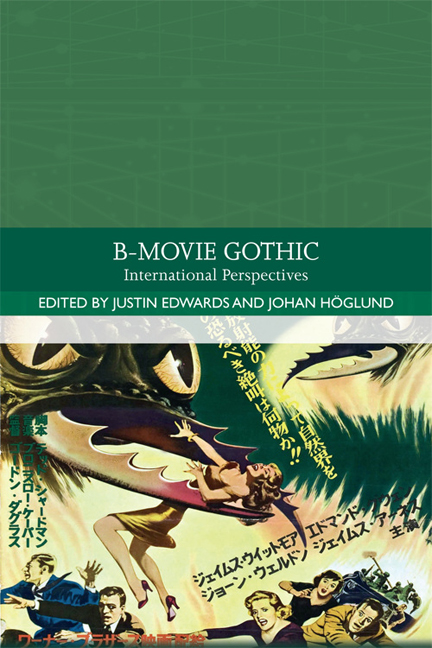9 - Turkish B-Movie Gothic: Making the Undead Turkish in Ölüler Konuşmaz Ki
Published online by Cambridge University Press: 06 May 2021
Summary
B-movies were once considered ‘the Hollywood stepchild, the underbelly of the double feature’ and ‘the scrambling rat of cinematic innovation’ (Sterritt and Anderson 2008, xi). Nevertheless, they constituted the backbone of Turkish cinema from the 1950s onwards and had their heyday in the 1970s. The main sources of B-movies in Turkey were adaptations, or more precisely exploitations, of American and British productions, as copyright law was then non-existent in Turkey. During the adaptation process, the films were Turkified in the sense that they were adapted to be culturally relevant for Turkish audiences. The settings would be Istanbul, the characters’ Anglophone names would be replaced with Turkish names, and Anglo-American references would be replaced with Turkish equivalents. Also known as Turksploitation films worldwide, these movies were shot within a day or two with very low budgets, in limited locations, with unknown actors, using poorly written scripts, ill-assorted costumes and hastily made sets. Although filmmakers used almost no visual effects, genres such as fantasy, science fiction, superhero and Gothic horror were the most popular genres for Turkish B-movies. Technical deficiencies pervaded the industry, and there were often commercial concerns about the cultural and religious differences between Western Gothic conventions and Turkish culture, which made Gothic B-movies the most difficult genre to produce. Yet, perhaps owing to the growing global interest in the genre, Turkish production companies still made films in this genre, though they were limited in number.
From the 1950s up until the 1990s, Gothic tropes were utilised by many genres in Turkish cinema, including sci-fi, parody and melodrama, but four films in particular achieved the classic Gothic atmosphere in Turkish contexts and established a foundational cinematic aesthetic for the Turkish Gothic tradition. As with other B-movies, the common element of these four Gothic films is the emphasis given to the Turkification process; that is, the ways in which the filmmakers make the Gothic conventions Turkish. Çığlık (The Scream, 1949) was the first Gothic horror film of Turkish cinema, and, although the film did not survive, the process of Turkification is seen in Çığlık's posters and newspaper advertisements (which I discuss below).
- Type
- Chapter
- Information
- B-Movie GothicInternational Perspectives, pp. 139 - 154Publisher: Edinburgh University PressPrint publication year: 2018

